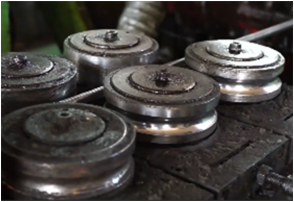10월 . 01, 2024 03:18 Back to list
A Comprehensive Guide to Various Types of Bolts and Their Applications
Understanding All Bolt Types An Essential Guide
Bolts are a fundamental component in construction, manufacturing, and various mechanical applications. Their primary function is to fasten two or more objects together securely. However, with so many different types of bolts available, it can be challenging to choose the right one for your specific needs. In this article, we will explore the various types of bolts, their characteristics, and applications, helping you understand which type to use for your projects.
1. Hex Bolts
Hex bolts, or hexagonal bolts, are one of the most common types of bolts. They have a hexagonal head and are typically used in construction and assembly tasks. The design allows for easy installation and removal with a wrench. Hex bolts come in various lengths and material grades, making them versatile for different applications, from structural assemblies to machinery.
2. Carriage Bolts
Carriage bolts feature a rounded head and a square neck that prevents them from turning when the nut is tightened. They are primarily used in wood applications and are well-suited for fastening wooden structures like decks and railings. The smooth head gives a clean finish, making them an excellent choice for visible applications.
3. Lag Bolts
Lag bolts, or lag screws, are heavy-duty fasteners with a large diameter and coarse thread designed for wood. They are ideal for securing heavy items and offer high shear strength. Lag bolts are often used in applications where a strong, permanent hold is necessary, such as in building frameworks or attaching large timbers.
4. Socket Head Cap Screws
Socket head cap screws have a cylindrical head and are driven by an Allen wrench (hex key). This design allows for a high torque application, making them suitable for high-stress environments. They are commonly used in machinery and automotive applications where precision and reliability are crucial.
5. Eye Bolts
Eye bolts are designed with a looped head, allowing for the attachment of a hook, rope, or cable. They are commonly used in lifting and rigging applications. Eye bolts are available in various designs, including screw-in, which allows for easier installation in tight spaces.
all bolt types

6. Machine Bolts
Machine bolts are used to fasten components together in machinery and equipment. They have a flat or rounded head and are usually installed with a nut. Their design accommodates a wide variety of sizes and grades, making them suitable for heavy machinery and vehicles.
7. Flange Bolts
Flange bolts have a built-in flange or washer under the head, distributing the load more evenly and reducing the likelihood of loosening. They are often used in applications where vibration is an issue, such as automotive and industrial machinery.
8. Stud Bolts
Stud bolts, which are long rods with threads on both ends, are typically used in applications that require a secure connection without protruding heads. Stud bolts are ideal for flanged connections in piping systems, providing a strong and reliable hold.
Choosing the Right Bolt
When selecting a bolt, consider the following factors
- Material Steel bolts are common, but other materials like stainless steel, brass, and nylon may be needed for specific environments, especially where corrosion resistance is crucial. - Strength Different grades of bolts offer varying levels of strength, making it essential to choose one suitable for the load it needs to support. - Length and Diameter The thickness of the materials being fastened together will dictate the needed length and diameter of the bolt.
Conclusion
Understanding the different types of bolts is critical for anyone involved in construction, repair, or manufacturing. By recognizing the unique features and applications of each type, you can make informed decisions for your projects. Whether you need a simple hex bolt for assembling furniture or a heavy-duty lag bolt for construction, knowing your options will help ensure your fasteners perform efficiently and reliably.


